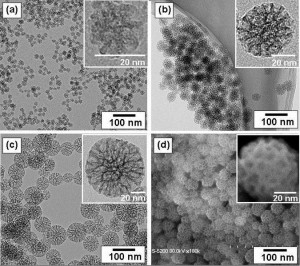WVU Researcher Warns About Toxic Ultrafine Dust in West Virginia
From an Article by Glynis Board, WV Public Broadcasting, April 15, 2015
When we hear about the danger of dust exposure, we are usually talking about coal dust underground, or silica dust. But that’s not the only dust that can make people sick. Apparently almost any dust can, if it’s fine enough.
Much research has surfaced over the past decade demonstrating clearer and clearer evidence that surface mining creates environmental hazards for communities in the vicinity. Epidemiologist Michael Hendryx has published a lot of research that demonstrates how life expectancy in the southern coalfields, for example, is much shorter than just about anywhere else in the country. But Michael McCawley says that’s not all we know.
“We also know they have a much increased rate of lung disease and also death from lung disease, much higher than in the rest of Appalachia and much higher than in the rest of the country in general.”
Michael McCawley is Interim Chair of the Department of Occupational and Environmental Health Sciences at West Virginia University. He’s been studying some aspects of air pollution that might shed new light on some of the human health disparities that seem to be abundant around surface mining operations, including lung and cardiovascular disease, and high blood pressure. His passion these days: ultrafine particle pollution.
Health Effects
By ultrafine, we are talking about dust small enough to pass right into the smallest parts of you.
“So your cell is kind of like Jell-O with a harder outside casing but the harder outside casing has pinholes,” McCawley explained, “and these particles are smaller than the pinholes. So they can move into the inside of the cell where the exposure results in inflammation. And inflammation is the beginning of a huge number of diseases.”
McCawley explains that there is a substantial body of literature that demonstrates the toxic effects of these particles. He says exposure to ultrafine particles emitted from diesel engines in Europe is associated with exacerbated asthma in young children as well as lung and cardiovascular diseases.
“They get into the lungs. In the lungs they can affect the nervous system. And the nervous system has an effect on the entire body including the arteries in the body. So you can get an increased blood pressure due to exposure just in the lungs.”
McCawley says it matters to some degree what the dust is made from, but all ultrafine particles are probably toxic.
“One of the ways we know that,” McCawley said, “they’ve done experiments with titanium dioxide. Titanium dioxide is the white pigment in paint. Generally it’s known to be fairly nontoxic.”
He says rats exposed to high concentrations of titanium dioxide dust at two, to four micrometers in size, has no effect on the animals’ health. But the same amount of exposure to ultrafine particles of titanium dioxide kills the rats.
Monitoring Ultrafine Particles
McCawley has been studying ultrafine particles in regions of West Virginia where surface mining is underway. In his research, he uses particle counters that indicate how many dust particles exist in the air. He has also been able to determine the sizes and distribution of particles. It’s a complicated metric system but McCawley says it provides much more accurate ideas of the doses of dust likely to be absorbed in human lungs.
He also looked at the makeup of the dust and was able to determine that it was, “crustal, in other words from dirt being disturbed,” McCawley said. “So that suggested to us that there was activity going on removing dirt and materials that would have aerosolized these crustal particles, so we assumed that would be associated with the mining activities.”
The Environmental Protection Agency does not have any rules on the books regulating ultrafine particle pollution. Rules do exist pertaining to larger dust particle exposure. But McCawley explains that EPA considers the overall mass of dust in the air for those rules. Ultrafine particles, he says, would need to be monitored and regulated differently.
McCawley recently gave a talk about ultra-fine particles to the Kanawha Forest Coalition, a group of Kanawha County residents concerned about a mountaintop removal site located near Charleston. He recommends that any community in the vicinity of surface mining or mountaintop removal test for ultrafine particle pollution.
But coal mining isn’t the only industry McCawley is concerned about. He says anywhere where there’s a lot of traffic or diesel generators (highways and horizontal gas drilling operations, for example) are major sources of ultrafine particle pollution. McCawley is also set to talk in Doddridge County, April 16th at 6 pm, at the Senior Center in West Union, to folks who live in the heart of West Virginia’s natural gas boom.
See also: www.FrackCheckWV.net

